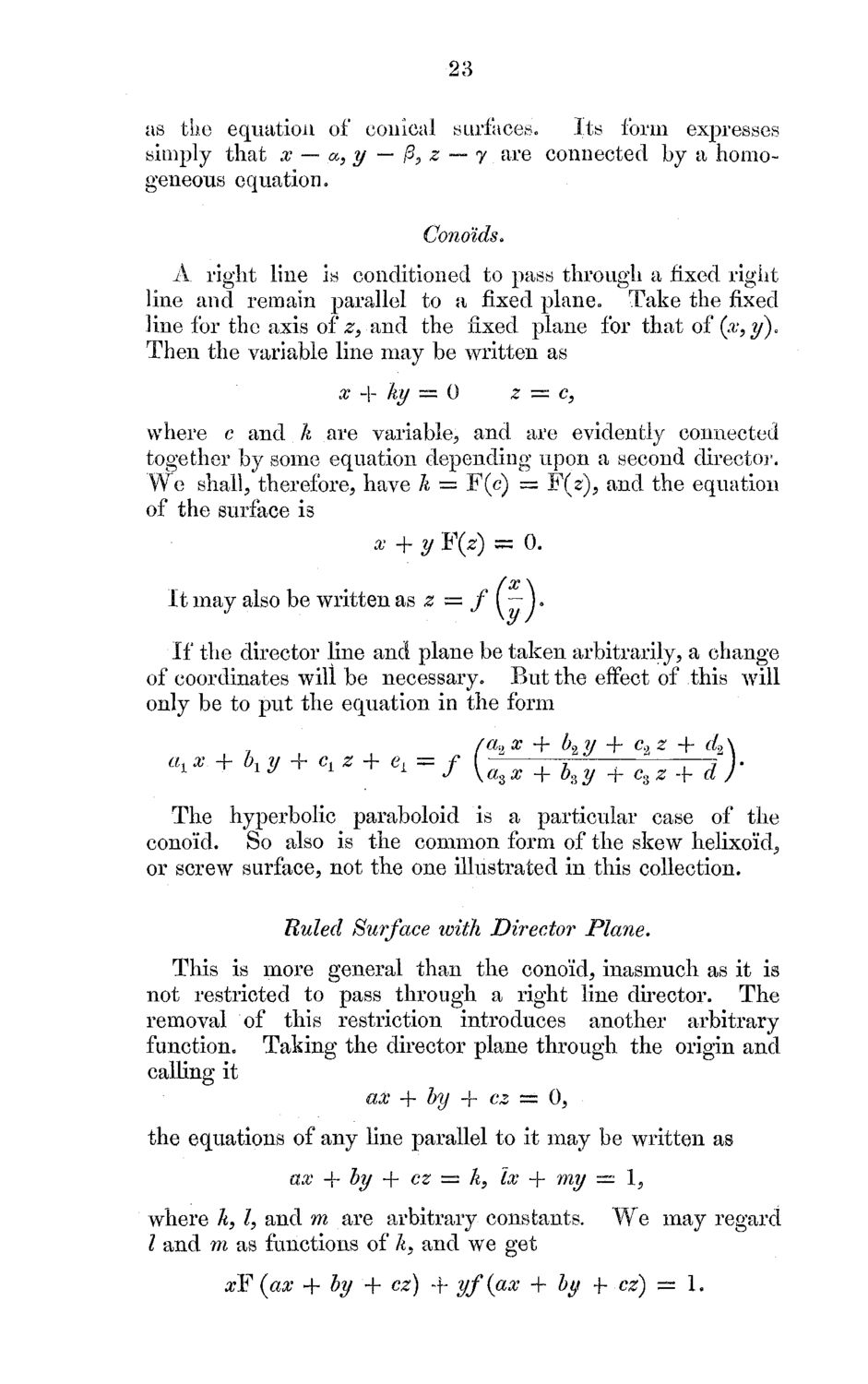| |
| |
Caption: Mathematical Models Catalog of a Collection of Models of Ruled Surfaces
This is a reduced-resolution page image for fast online browsing.

EXTRACTED TEXT FROM PAGE:
23 as the equation of conical surfaces. Its form expresses simply that x — a, y — P> z — y are connected by a homo< geneous equation. Conoids. A right line is conditioned to pass through a fixed right line and remain parallel to a fixed plane. Take the fixed line for the axis of z, and the fixed plane for that of (x,y). Then the variable line m a y be written as x -\- ky = 0 z = c, where c and k are variable., and are evidently connected together by some equation depending upon a second director. W e shall., therefore, have k = F(c) = F(z), and the equation of the surface is x + y F(s) = 0. It may also be written as z = / f — J. If the director line and plane be taken arbitrarily, a change of coordinates will be necessary. But the effect of this will only be to put the equation in the form (a^x -f b2y + c2z + d2\ The hyperbolic paraboloid is a particular case of the conoid. So also is the c o m m o n form of the skew helixoid, or screw surface, not the one illustrated in this collection. Ruled Surface with Director Plane. This is more general than the conoid, inasmuch as it is not restricted to pass through a right line director. T h e removal of this restriction introduces another arbitrary function. Taking the director plane through the origin and calling it ax -f by + cz = 0, the equations of any line parallel to it may be written as ax + by + cz = k, Ix + my — 1, where A, Z, and m are arbitrary constants. We may regard I and m as functions of k, and w e get xF (ax + by + cz) -f yf(ax -f by f cz) = 1.
| |